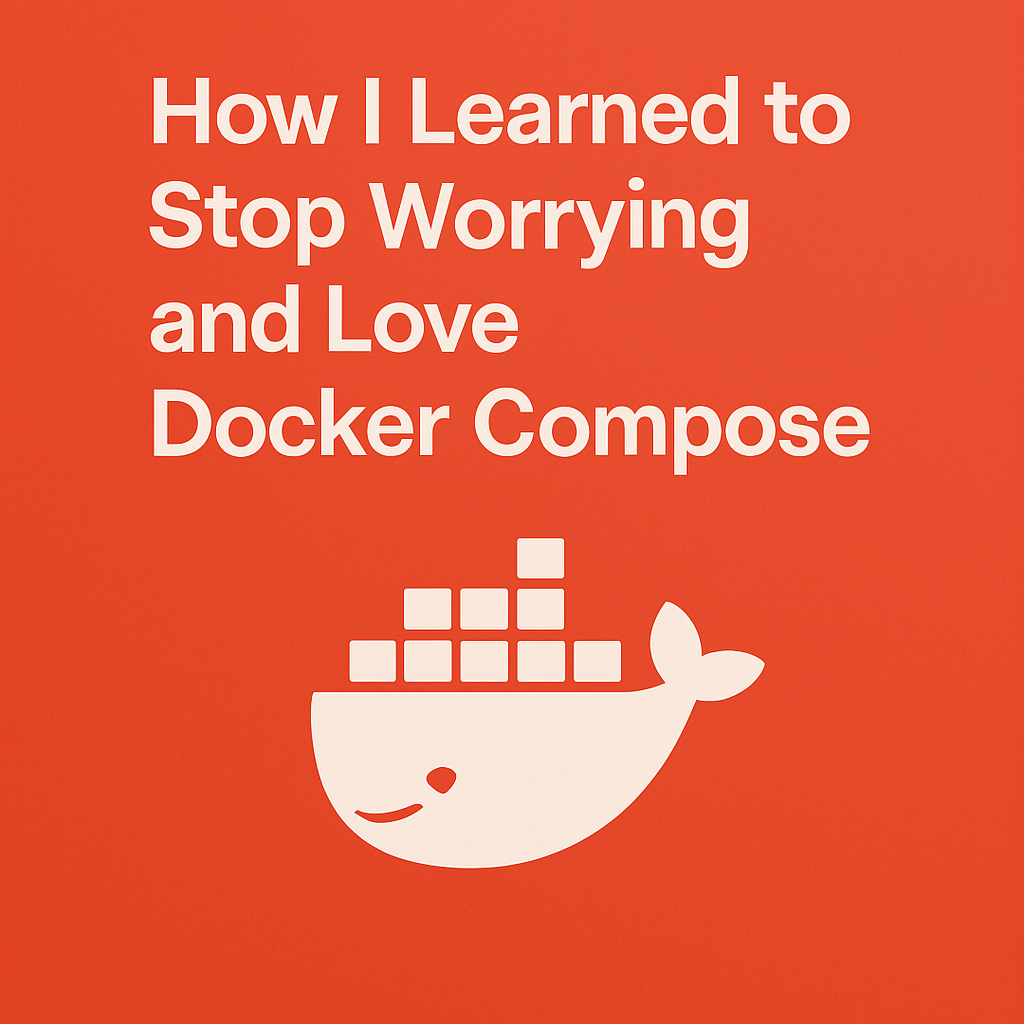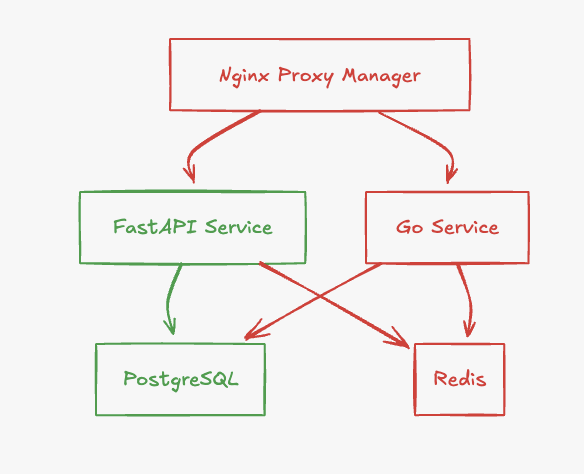
After a decade of building systems, I’ve found that Docker Compose is the sweet spot for most projects. Not as complex as Kubernetes, but powerful enough to handle real-world applications. Here’s how I use it to manage a typical microservices stack from my home office in Udaipur.
Let’s start with what we’re trying to achieve:

This is a common setup you’ll encounter:
If you’ve tried managing this manually, you know the headaches:
Here’s the complete docker-compose.yml that solves all these problems:
version: '3.8'
services:
nginx-proxy:
image: 'jc21/nginx-proxy-manager:latest'
restart: unless-stopped
ports:
- '80:80'
- '443:443'
- '81:81'
volumes:
- ./data/nginx/data:/data
- ./data/nginx/letsencrypt:/etc/letsencrypt
networks:
- app_network
fastapi:
build: ./fastapi
restart: unless-stopped
environment:
- DATABASE_URL=postgresql://user:password@postgres:5432/mydb
- REDIS_URL=redis://redis:6379/0
depends_on:
postgres:
condition: service_healthy
redis:
condition: service_healthy
networks:
- app_network
goservice:
build: ./goservice
restart: unless-stopped
environment:
- DB_CONNECTION=postgres://user:password@postgres:5432/mydb
- REDIS_ADDR=redis:6379
depends_on:
postgres:
condition: service_healthy
redis:
condition: service_healthy
networks:
- app_network
postgres:
image: postgres:15-alpine
restart: unless-stopped
environment:
- POSTGRES_USER=user
- POSTGRES_PASSWORD=password
- POSTGRES_DB=mydb
volumes:
- postgres_data:/var/lib/postgresql/data
healthcheck:
test: ["CMD-SHELL", "pg_isready -U user -d mydb"]
interval: 10s
timeout: 5s
retries: 5
networks:
- app_network
redis:
image: redis:7-alpine
restart: unless-stopped
volumes:
- redis_data:/data
healthcheck:
test: ["CMD", "redis-cli", "ping"]
interval: 10s
timeout: 5s
retries: 5
networks:
- app_network
volumes:
postgres_data:
redis_data:
networks:
app_network:
driver: bridge
Services can talk to each other using their service names. No more IP hunting:
environment:
- DATABASE_URL=postgresql://user:password@postgres:5432/mydb
- REDIS_URL=redis://redis:6379/0
Make sure services are actually ready, not just running:
healthcheck:
test: ["CMD-SHELL", "pg_isready -U user -d mydb"]
interval: 10s
timeout: 5s
retries: 5
Keep your data safe across restarts:
volumes:
postgres_data:
redis_data:
Services on the same network can talk to each other, others can’t:
networks:
app_network:
driver: bridge
# Pull latest images and start services
docker-compose pull
docker-compose up -d
# View running services
docker-compose ps
# Check logs
docker-compose logs -f service_name
# Backup database
docker-compose exec postgres pg_dump -U user mydb > backup.sql
# Update services
docker-compose pull
docker-compose up -d --remove-orphans
Add Portainer for a nice web UI to manage everything:
portainer:
image: portainer/portainer-ce
restart: unless-stopped
ports:
- "9000:9000"
volumes:
- /var/run/docker.sock:/var/run/docker.sock
- portainer_data:/data
Use Environment Files
# .env
POSTGRES_PASSWORD=your_secure_password
REDIS_PASSWORD=another_secure_password
Resource Limits
services:
fastapi:
deploy:
resources:
limits:
cpus: '0.50'
memory: 512M
Logging Configuration
services:
fastapi:
logging:
driver: "json-file"
options:
max-size: "10m"
max-file: "3"
Docker Compose hits the sweet spot for most projects. It’s simple enough to understand quickly but powerful enough to run production workloads. Start here, and only move to Kubernetes when you actually need its features.
P.S.: Running this setup in production? Remember to secure your services, set resource limits, and configure proper logging. Feel free to reach out if you need help!